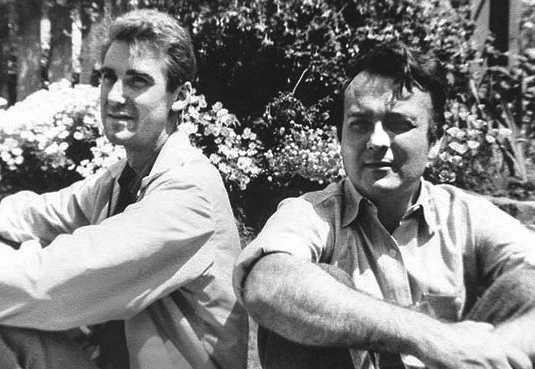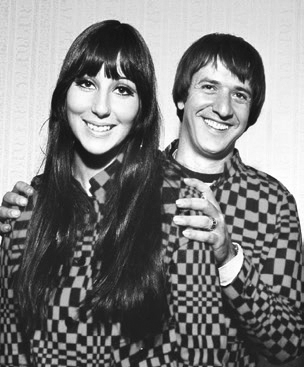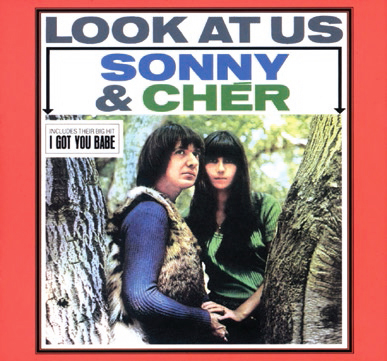It Takes Two - Page 4
5. ROBERT DUNCAN AND JESS
 |
|
|
Duncan and Jess began living together as an 'out' gay couple (before the term was in use) in the early 1950s in a two-story Victorian home in San Francisco's Mission District.
Their relationship was deeply loving, with Duncan the more outgoing of the two and Jess more reserved. With common intellectual and domestic interests, they created a shared world in which their spiritual interests could flourish.
Duncan (1919-1988), a leading poet of the San Francisco Renaissance and Beatnik scenes; and Jess (1923-2004), a painter and collagist less known at the time, were modernists and medievalists simultaneously.
The poems of Duncan and the artworks of Jess were like rivers fed by common streams: Greek myth, alchemy, the occult, the Oz books, classical music, and Finnegan's Wake.
They both collaborated—and did not.
"Both were able to inspire each other," says Christopher Wagstaff, co-curator of the Jess Collins Trust. "And both agreed early on not to criticize each others' work, but to support it."
 |
|
|
Curator Michael Duncan (no relation to Robert) said: "Jess' work fed off of Duncan's poetry, and Duncan's poetry fed off of Jess' visual art." Jess (he dropped 'Collins' because his family would not accept his being gay) illustrated several of Duncan's books, including A Book of Resemblances, Poems 1950-1953.
"It's a work of art, really," Wagstaff says.
In later years Duncan wrote several poems about his life partner. Jess used Duncan as subject matter often, portraying him as an 'Enamored Mage' in one famous painting. After Duncan's death, Jess created Emblems for Robert Duncan, a collected publication of poems.
But the couple's real collaboration was in the domestic realm, Tara McDowell suggested in her book about them, The Householders.
"They collaborated rarely," wrote McDowell, "which may seem surprising given the intensity of their shared worldview and the length of their relationship, some 37 years. But they did have one lasting collaboration: the joint labor of maintaining the household."
The home became an artwork in itself, filled with images, books, and objects that inspired them—and that intrigued friends who made the home an artistic center.
The home in some ways became one of Jess' famous collages.
6. SONNY AND CHER
 |
Can anyone write about husband-and-wife teams in the arts without at some point mentioning Svengali, the fictional villain from a Victorian-era novel who uses hypnosis to transform a young Irish beauty into a singing sensation totally under his control?
Sonny Bono (1935-1998) was no Svengali but by all accounts a charming, talented guy who went on to become mayor of Palm Springs and a member of Congress.
Still, when Sonny met 16-year-old Cher (1946- ) in a coffeehouse, he was 28 and, according to Cher's mother, "the spitting image of her father," who had abandoned the family. And from 1964 to 1975, when the pair divorced, Sonny called most of the shots.
"I had such a hero worship of Sonny," Cher has said.
Sonny may have dominated his wife in some ways, but he allowed her to grow as a singer by encouraging her and writing catchy songs. He wrote hit songs, ran the business, keeping ownership of almost all of it for himself. He also ran much of Cher's life, Cher would complain in her divorce papers.
 |
But Cher, who went on to greater professional success in her post-Sonny years, may have played the decisive role in the couple's initial success—but not because of her voice or striking looks.
It was her fashion—bell bottoms, fur vests that looked like thrift store finds—that created an aura around the couple's burst of hit songs, titillated international fans, and spruced up the news coverage from 1965 to 1967.
For a time, Sonny and Cher defined the 1960s. They had five top-20 hits in 1965, Time magazine called them the 'It Couple,' and in their decade together they sold 40 million records. Songs like 'I Got You Babe,' 'Baby Don't Go,' and 'The Beat Goes On' played on the image of a couple in love.
As their pop sound fell from popularity, they transitioned to TV. 'The Sonny and Cher Comedy Hour' proved one of the top TV shows of the early 1970s.
Even as their relationship soured—"One woman, or even five, was not enough for him," Cher said of Sonny—the couple stayed together because togetherness was essential to their act.




